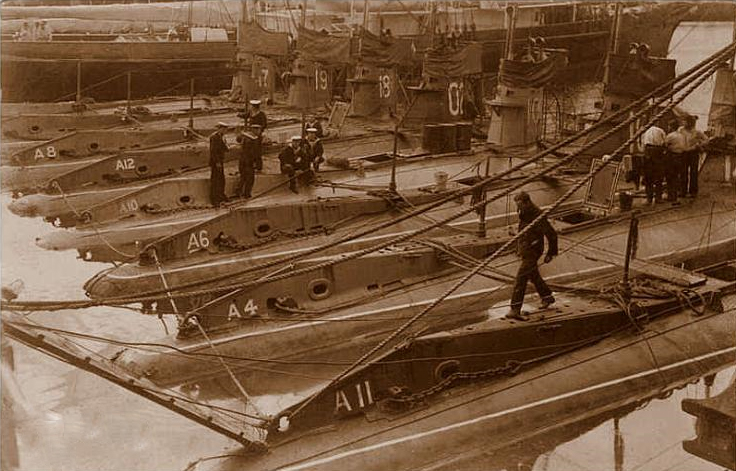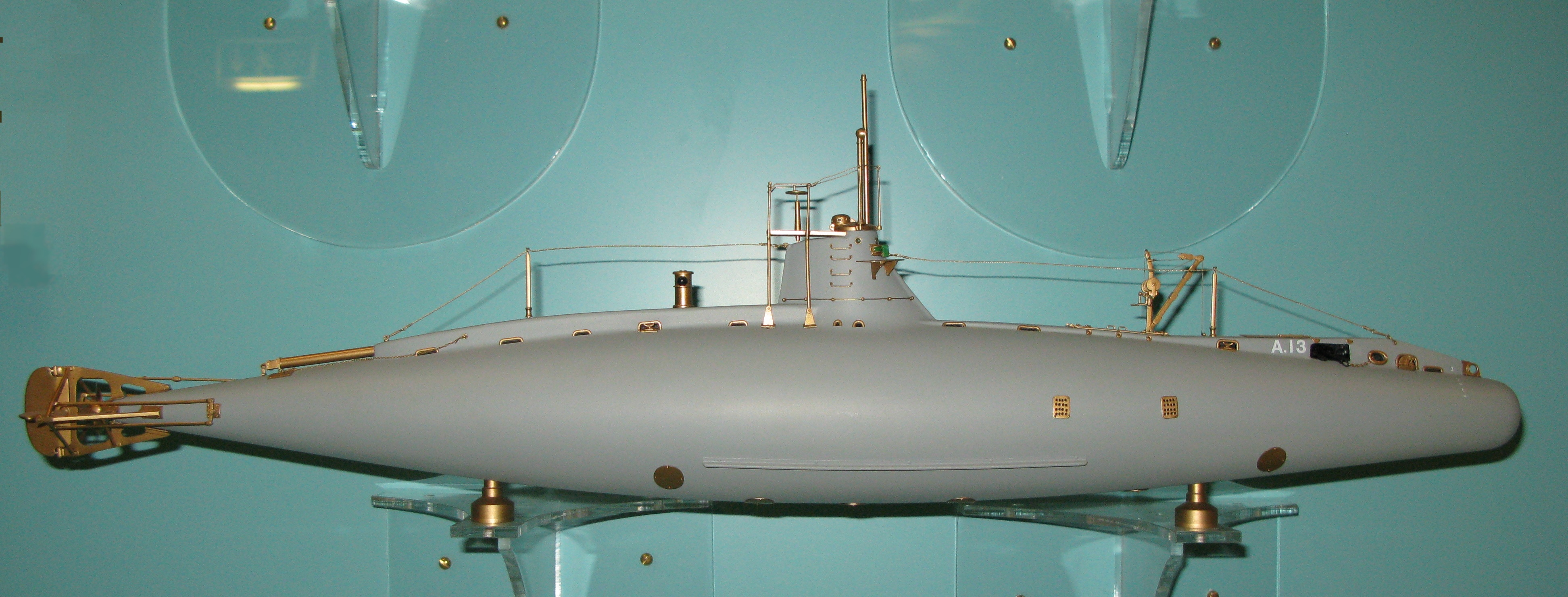A-class Submarine (1903) on:
[Wikipedia]
[Google]
[Amazon]
The A class was the 

MaritimeQuest A Class Overview
{{DEFAULTSORT:A Class Submarine (1903) A class submarine (1903), British
Royal Navy
The Royal Navy (RN) is the United Kingdom's naval warfare force. Although warships were used by Kingdom of England, English and Kingdom of Scotland, Scottish kings from the early medieval period, the first major maritime engagements were foug ...
's first class
Class or The Class may refer to:
Common uses not otherwise categorized
* Class (biology), a taxonomic rank
* Class (knowledge representation), a collection of individuals or objects
* Class (philosophy), an analytical concept used differently ...
of British-designed submarines. Thirteen were built by Vickers
Vickers was a British engineering company that existed from 1828 until 1999. It was formed in Sheffield as a steel foundry by Edward Vickers and his father-in-law, and soon became famous for casting church bells. The company went public in ...
at Barrow-in-Furness
Barrow-in-Furness is a port town in Cumbria, England. Historically in Lancashire, it was incorporated as a municipal borough in 1867 and merged with Dalton-in-Furness Urban District in 1974 to form the Borough of Barrow-in-Furness. In 202 ...
between 1902 and 1905 as an improvement on the US .


Design and construction
While there was considerable variation amongst the boats of the class, they were around long and displaced around 200 tons when submerged. The first, ''A1'' (ordered as ''Holland No. 6''), was launched in July 1902, the last, ''A13'', in April 1905.Propulsion
All were propelled underwater by battery-powered electric motors and on the surface by shaft-drive Wolseleypetrol
Gasoline (; ) or petrol (; ) (see ) is a transparent, petroleum-derived flammable liquid that is used primarily as a fuel in most spark-ignited internal combustion engines (also known as petrol engines). It consists mostly of organic c ...
engines of (''A1''), (''A2-A4'') or (''A5''-''A12''). ''A13'' had an experimental Vickers
Vickers was a British engineering company that existed from 1828 until 1999. It was formed in Sheffield as a steel foundry by Edward Vickers and his father-in-law, and soon became famous for casting church bells. The company went public in ...
diesel engine
The diesel engine, named after Rudolf Diesel, is an internal combustion engine in which ignition of the fuel is caused by the elevated temperature of the air in the cylinder due to mechanical compression; thus, the diesel engine is a so-ca ...
, which proved to be unreliable.
Armaments
Armament was two torpedo tubes with four torpedoes except for ''A1'', which had 1 tube and 3 torpedoes.Service history
This submarine class was plagued by numerous accidents and failures; almost every boat in the class (''A1'', ''A3'', ''A4'', ''A5'', ''A7'', and ''A8'') was involved in some sort of accident over the course of their operational history. Many were fatal to the crew, and resulted in the decommissioning of the submarine. ''A1'' was sunk offPortsmouth
Portsmouth ( ) is a port and city status in the United Kingdom, city in the ceremonial county of Hampshire in southern England. The city of Portsmouth has been a Unitary authorities of England, unitary authority since 1 April 1997 and is admi ...
on 18 March 1904, in collision with the liner ''Berwick Castle'', but raised and put back into service before finally being sunk as a naval gunnery target in 1911, followed in 1912 by ''A3''. ''A7'' was lost in Whitsand Bay
Whitsand Bay, situated in south east Cornwall, England, runs from Rame Head in the east to Portwrinkle in the west. It is characterised by sheer, high cliffs, dramatic scenery and long stretches of sandy beaches. The South West Coast Path runs t ...
in 1914 after diving into mud. ''A13'' was laid up in 1914 due to engine unreliability.
The remainder were used during World War I
World War I (28 July 1914 11 November 1918), often abbreviated as WWI, was List of wars and anthropogenic disasters by death toll, one of the deadliest global conflicts in history. Belligerents included much of Europe, the Russian Empire, ...
for harbour defence, ''A2'' and ''A4'', ''A5'' and ''A6'' at Portsmouth
Portsmouth ( ) is a port and city status in the United Kingdom, city in the ceremonial county of Hampshire in southern England. The city of Portsmouth has been a Unitary authorities of England, unitary authority since 1 April 1997 and is admi ...
, ''A8'' and ''A9'' at Devonport, and ''A10'', ''A11'' and ''A12'' at Ardrossan
Ardrossan (; ) is a town on the North Ayrshire coast in southwestern Scotland. The town has a population of 10,670 and forms part of a conurbation with Saltcoats and Stevenston known as the ' Three Towns'. Ardrossan is located on the east shor ...
. All survived the war and were converted to training in 1918 and sold in 1919–1920 except for ''A2'', which was wrecked while awaiting disposal and finally sold in 1925.
Notes
References
*External links
MaritimeQuest A Class Overview
{{DEFAULTSORT:A Class Submarine (1903) A class submarine (1903), British